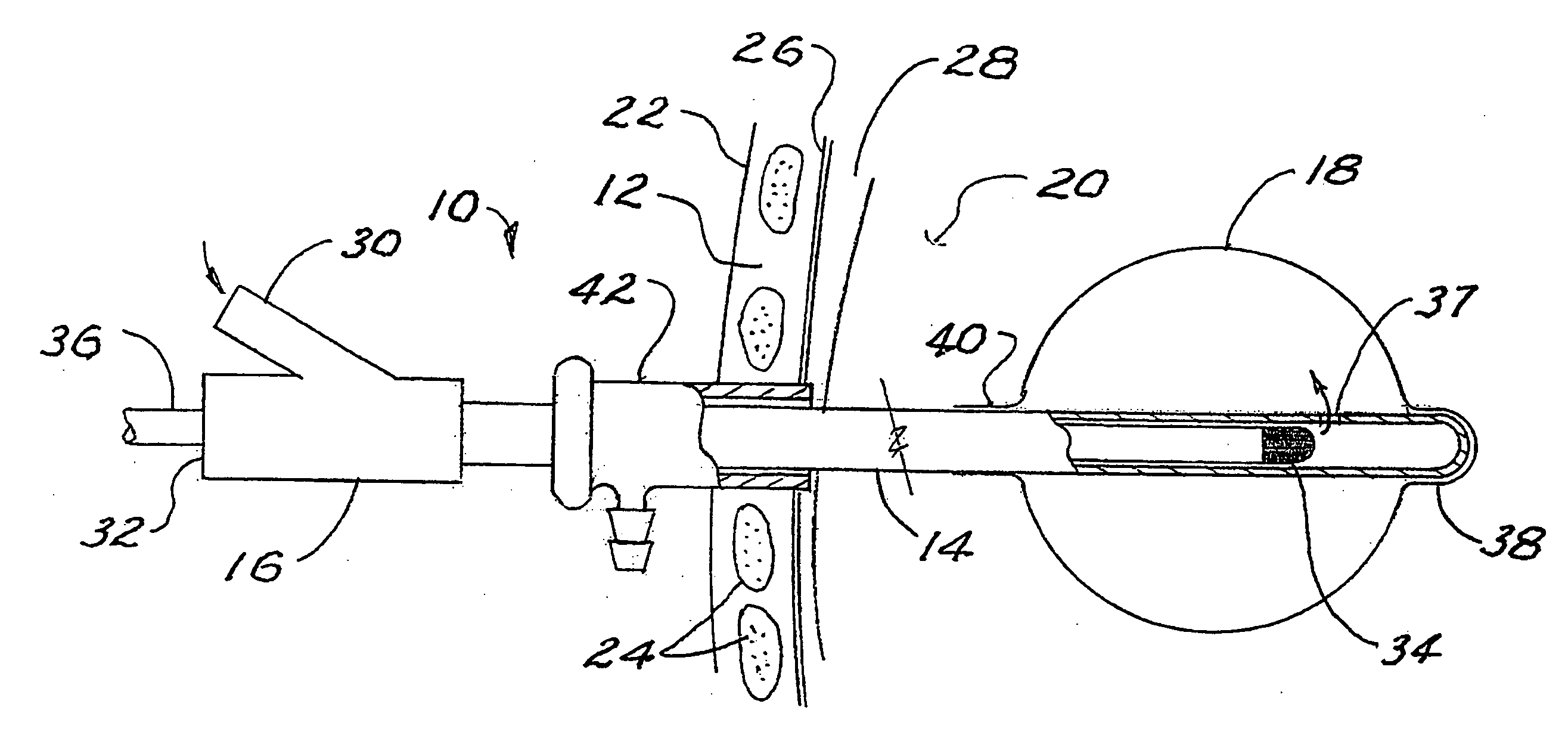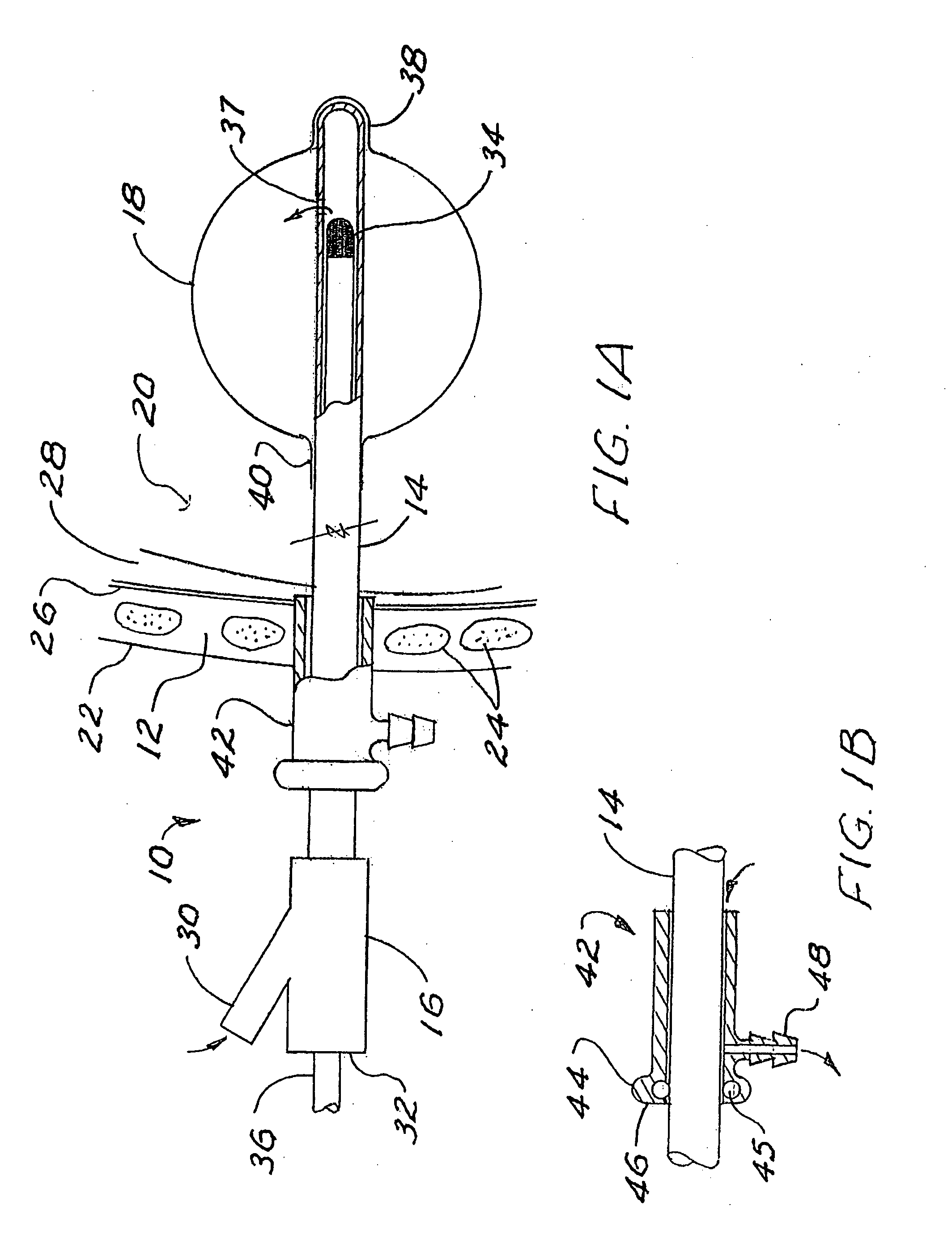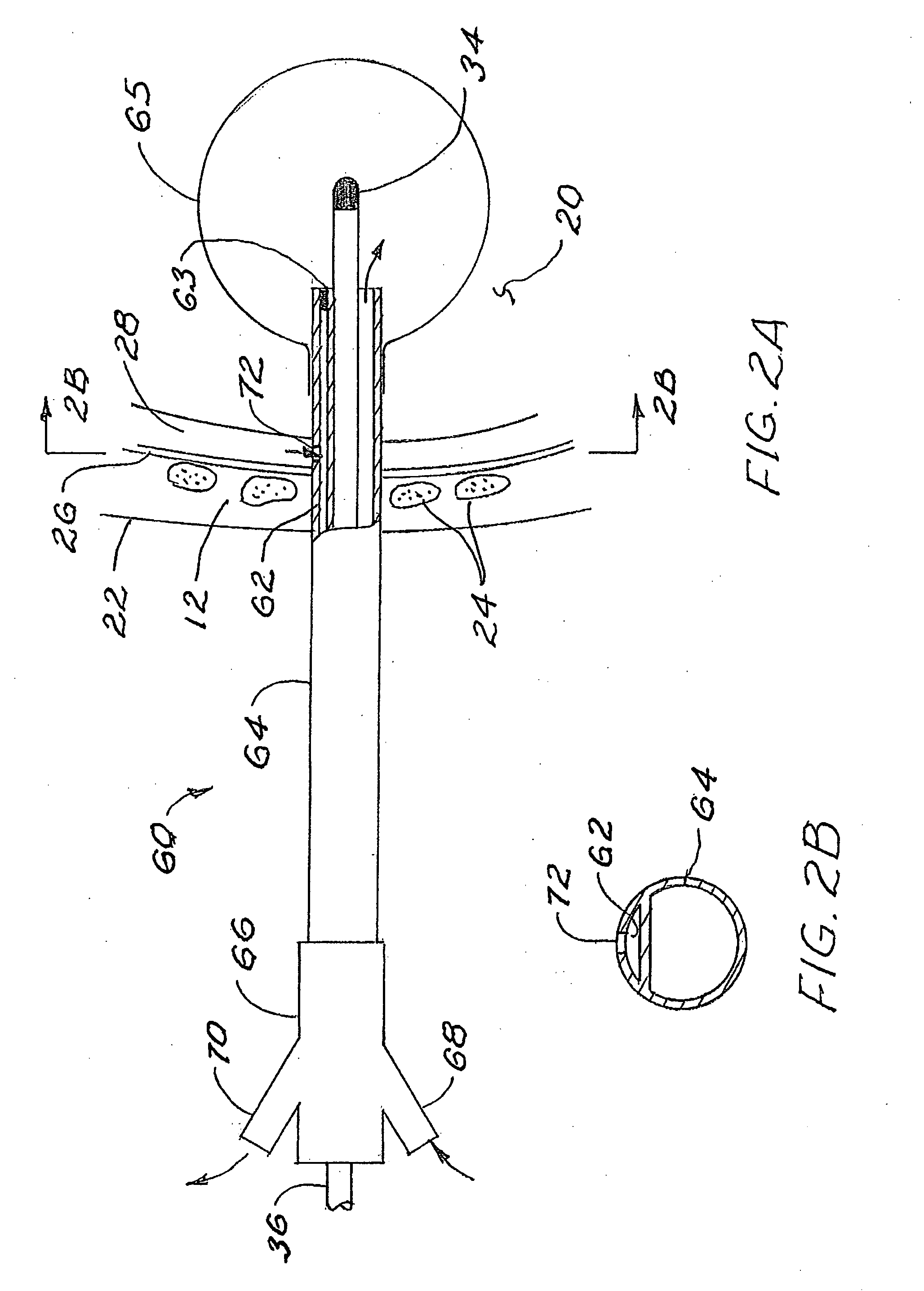Brachytherapy apparatus and method for use with minimally invasive surgeries of the lung
a brachytherapy and lung technology, applied in the field of minimally invasive lung surgery, can solve the problems of recurrence potential of diffuse proliferative disease on the resected surface, dose generally decreases exponentially, and isotope sources cannot in principle be modulated, so as to facilitate proper lung inflation, prevent or reduce pneumothorax, and eliminate over-exposure
- Summary
- Abstract
- Description
- Claims
- Application Information
AI Technical Summary
Benefits of technology
Problems solved by technology
Method used
Image
Examples
Embodiment Construction
[0022]FIG. 1A is a side view in partial section showing an applicator 10 of the invention passing through the chest wall 12 of the patient. The shaft 14 of the applicator extends from a conventional hub 16 outside the patient into a balloon 18 positioned within a resected portion of the lung 20. The chest wall 12 includes the skin 22, ribs 24, and parietal pleura 26. The space between the parietal pleura 26 and the visceral pleura (not shown) covering the lung 20 defines the pleural cavity 28.
[0023]The hub 16 of the applicator 10 includes a side port 30 for inflating the balloon 18 and a central port 32 for advancing a radiation source 34 and source catheter 36 into the balloon 18. The central port includes a conventional seal (not shown) to avoid fluid leaks around the catheter through the hub. The shaft 14 extends from the hub into the balloon, and the balloon inflation medium passes through the shaft around the catheter 36 to a port 37 opening into the interior of the balloon 18 ...
PUM
 Login to View More
Login to View More Abstract
Description
Claims
Application Information
 Login to View More
Login to View More - R&D
- Intellectual Property
- Life Sciences
- Materials
- Tech Scout
- Unparalleled Data Quality
- Higher Quality Content
- 60% Fewer Hallucinations
Browse by: Latest US Patents, China's latest patents, Technical Efficacy Thesaurus, Application Domain, Technology Topic, Popular Technical Reports.
© 2025 PatSnap. All rights reserved.Legal|Privacy policy|Modern Slavery Act Transparency Statement|Sitemap|About US| Contact US: help@patsnap.com



